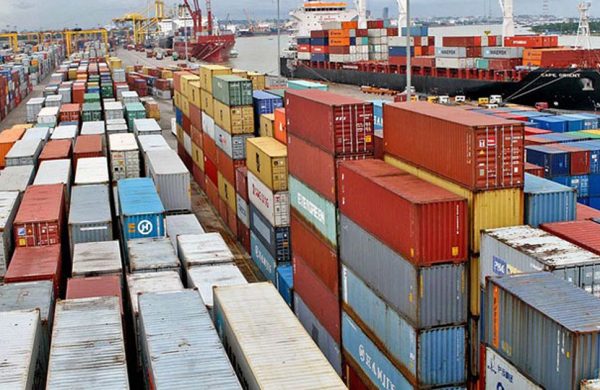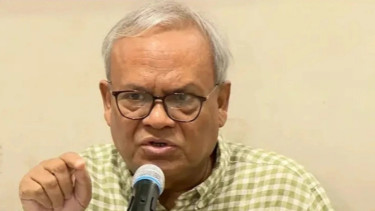Is the country’s import bouncing back?
- Update Time : Tuesday, April 30, 2024

TDS Desk:
Import of goods to the country decreased for two years on the trot in the wake of the Russia-Ukraine war and dollar crisis. The uncertainty over the national election also caused the import problem to linger. But imports have bounced back to a positive trend after the election. This trend has been found between January 1 to April 24 of this year comparing the import in the corresponding period of the last year. Despite various steps of the government to restrict import, the import of goods to the country is increasing. The stakeholders said the dollar crisis has been mitigated somewhat. The businessmen are also not facing strict restrictions in opening letters of credit (LC).
According to the National Board of Revenue (NBR) information, a total of 45.8 million tonnes of goods were imported between January and 24 April, up from 43.3 million tonnes at the same time last year. This data shows a 5.77 per cent increase in imports compared to last year. However, despite an increase compared to the last year, the import is yet to revert to the state of pre-war time.
Alongside the amount imported, the spending on import increased too. From 1 January to 24 April this year, the customs value of imported goods was USD 24.03 billion. The amount was USD 22.62 billion last year. That means the import cost has increased by 6.23 per cent.
Import of cotton, scrap iron, soybean seeds, wheat, coal, plastic products and raw materials has increased. Import of clinkers is still low while import of old ships has also decreased. Although import of electronic equipment has increased, boilers and other machineries of industries import have decreased. The import of capital machineries has dropped as a whole. This shows that despite an increase in overall import, the trend of import in different sectors and products varies.
Meghna Group of Industries’ chairman Mostafa Kamal told that despite demands, import decreased due to strict restrictions by the government. But the dollar-crisis and volatility of dollar price have decreased a bit compared to last year. Dollars are now available at Tk 114-115 in payment of import liabilities. Import is going back to a positive trend due to these. But the government should become more flexible in opening LCs for importing capital equipment as an increase of import of capital equipment would increase employment and thrust the country’s economy.
Positive trend in import after two years:
Increase in import of goods, especially raw materials import, means increase of production in the industrial sector. Increase in machinery import means increase of investment. If the import of commercial goods increases, it can be assumed that the economic activities in the country are increasing.
As per NBR data, prices of goods saw a whopping increase in the global market at the advent of Russia-Ukraine war in 2022. The war led to many complications in import. In 2022, year-on-year import fell by 2.5 per cent.
As per NBR data, prices of goods saw a whopping increase in the global market at the advent of Russia-Ukraine war in 2022. The war led to many complications in import. In 2022, year-on-year import fell by 2.5 per cent. A total of 143.6 tonnes of goods were imported to the country in 2021 which decreased to 140 million tonnes in the following year. This downtrend continued as the amount dipped further to 133.7 million tonnes, or 4.5 per cent, in 2022. Products that saw increase:
According to the NBR data, import of cotton increased by 55 per cent in this year compared to the same period last year. A total of 553,000 tonnes of cotton were imported between January and 24 April, which was 357,000 in the corresponding period last year.Import of animal feed and soybean seeds also increased. A total of 675,000 tonnes of soybean seeds were imported this year, compared to 291,000 tonnes last year. The import of this product saw a 131 per cent increase this year.
Bangladesh has imported around 1.4 million tonnes of scrap iron this year, compared to 947,000 tonnes last year. Import of this product saw a 48 per cent jump. Coal import has also increased by 37 per cent. Bangladesh imported 3.87 million tonnes, up from last year’s 2.81 million, this year.
Among consumer goods, wheat has increased by 62 per cent. Wheat import increased to 2.73 million tonnes this year from last year’s 1.68 million tonnes.
Import decline slowed:
Some products saw a rapid decline in imports in the last two years. The rate of fall in these products has been stemmed a bit this year. The rate of decline in imports of clinkers is now below 3 per cent. A total of 7.55 million tonnes of clinkers were imported this year, compared to 7.77 million in the same period last year. Import of this raw material of cement has seen a 2.77 per cent decline.
Import of unrefined sugar has seen a 31 per cent decline. Between January and 24 April, a total of 419,000 tonnes of sugar were imported, compared to 61 million in the corresponding period last year.
Asked, City Group’s director Biswajit Saha told that the demand for sugar has fallen. Again, sugar is coming illegally from the neighbouring country that also dropped the import.
Center for Policy Dialogue’s (CPD) distinguished fellow Mostafizur Rahman told that the import of capital equipment related to investment has not increased much. Investment has stagnated. If investment does not increase, there will be no boom in employment and economy.
Import of machinery for industries also dropped. A total of 287,000 tonnes of machineries worth USD 2.57 billion were imported this year. In the last year, 296,000 tonnes of machinery worth USD 3.01 billion were imported in the corresponding period of the last year.
Center for Policy Dialogue’s (CPD) distinguished fellow Mostafizur Rahman told that there seems to be a positive trend in the economy in the increase of imports. Despite the increase, we have not yet returned to the normalcy that existed before the Russia-Ukraine war.
He also said that the import of capital equipment related to investment has not increased much. Investment has stagnated. If investment does not increase, there will be no boom in employment and economy.

















